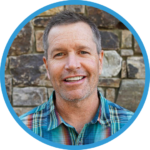Written by Curtis Knight, CalTrout Executive Director
California is and always has been a salmon state. We have 20 different kinds of salmon and steelhead in California from the very top of the state all the way down to San Diego. Many of these fish are close to blinking out, but as of February 2024, we have not yet lost a single species. These fish are fighters, and it is this resilience that speaks to the great opportunity we have - an opportunity that I find both hopeful and urgent.
Earlier this month, I was honored to represent CalTrout and our perspective on “Saving Salmon”, as I joined California Natural Resources Agency Secretary Wade Crowfoot for his monthly Secretary Speaker Series. My colleagues from the California Department of Fish and Wildlife, the Yurok Tribe, NOAA Fisheries, California State Water Board, and the Pacific Coast Federation of Fishermen's Associations also joined the conversation. Together with Secretary Crowfoot, we discussed what state actions are needed to recover salmon populations in California. Much of our conversation unpacked the Newsom Administration’s recently released California Salmon Strategy for a Hotter Drier Future.
This state strategy has a lot of the right ideas in place, but we need to make sure the urgency is there as well. For example, on the Eel River, we have two dams that are primed and ready for removal – but landscape scale projects like this need to happen more quickly, and we need the state support and leadership to support that. Dam removal on the Klamath River (happening right now) shows us that a project of this scale is possible, and it gives us an excellent blueprint to follow through in other watersheds like the Eel River, Battle Creek, Malibu Creek, and more (check out CalTrout’s top 6 dams for removal).
By removing obsolete dams in key watersheds, we can unlock and restore habitat for California’s native fish. But more habitat won’t help our fish if there isn’t sufficient water to flow through that habitat – and vice versa. The combination of these two strategies – restoring habitat and securing flows – requires diverse partnerships across the state. At CalTrout, we believe that it takes all of us, a restoration community, to drive the changes our fish need to see.
Today, we still have all 20 of California’s salmon and steelhead intact. But 11 could be gone in the next 50 years if current trends continue. Let’s hold the line together.
Watch the full panel here:
Cover Photo: Joey Blaine






